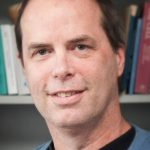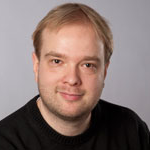Johannes Gutenberg University, Medical Center, Mainz

Cells that express RORγt play a critical function in immunity but also can play a harmful role in autoimmunity. These cells produce the pro-inflammatory cytokines IL-17 and IL-22, which are important not only to maintain intact barrier surfaces, but can also promote uncontrolled inflammation and contribute to tissue damage. The body has four main groups of cells that can express RORγt and subsequently IL-17, including the RAG-dependent αβ T cells (Th17 and Tc17) and γδ T cells and the innate lymphoid cells group 3 cells (ILC3). Most T cells are not programmed to express RORγt but do that after exposure to environmental factors, such as the microbiota. In contrast, ILC3 constitutively express IL-22 and to a lower extent IL-17, that are critical in the early responses to infections and tissue injury.
Recently, it was show that ILC3 can express MHC class II molecules, making them potential antigen presenting cells (APC) to CD4+ T cells, a unique feature for lymphoid cells in the mouse. In contrast to other APC, ILC3 interaction with CD4+ T cells, via MHC class II was shown to induce tolerance rather then immunity, therefore suggesting that ILC3 may contribute to novel mechanism of peripheral tolerance. In the frame of this grant application, we will like to study the role of ILC3 as either promoters or suppressors of inflammatory processes using novel genetic tools generated especially for this project. We will generate a new system that will allow us to specifically ablate ILC3 to study T cell responses and autoimmunity in their absence. In addition, we will use conditional gene targeting to either remove MHC class II from these cells or allow them to specifically present an autoantigen. We will then use these mice to study whether antigen-presentation by ILC3 results in tolerance of autoreactive T cells in vivo. Finally, we plan to use unique genetic tools to investigate how signaling of IL-1 and IL-6 affects the development and plasticity of ILC3 and their function. Our studies help to determine the role played by ILC3 in inflammation.



Publications
Kleiter, I., J. Song, D. Lukas, M. Hasan, B. Neumann, A. L. Croxford, X. Pedre, N. Hovelmeyer, N. Yogev, A. Mildner, M. Prinz, E. Wiese, K. Reifenberg, S. Bittner, H. Wiendl, L. Steinman, C. Becker, U. Bogdahn, M. F. Neurath, A. Steinbrecher and A. Waisman (2010). “Smad7 in T cells drives T helper 1 responses in multiple sclerosis and experimental autoimmune encephalomyelitis.” Brain 133: 1067-1081.
Kurschus, F. C., A. L. Croxford, A. P. Heinen, S. Wortge, D. Ielo and A. Waisman (2010). “Genetic proof for the transient nature of the Th17 phenotype.” European Journal of Immunology 40(12): 3336-3346.
Yogev, N., F. Frommer, D. Lukas, K. Kautz-Neu, K. Karram, D. Ielo, E. von Stebut, H. C. Probst, M. van den Broek, D. Riethmacher, T. Birnberg, T. Blank, B. Reizis, T. Korn, H. Wiendl, S. Jung, M. Prinz, F. C. Kurschus and A. Waisman (2012). “Dendritic Cells Ameliorate Autoimmunity in the CNS by Controlling the Homeostasis of PD-1 Receptor(+) Regulatory T Cells.” Immunity 37(2): 264-275.
Gritsch, S., J. N. Lu, S. Thilemann, S. Wortge, W. Mobius, J. Bruttger, K. Karram, T. Ruhwedel, M. Blanfeld, D. Vardeh, A. Waisman, K. A. Nave and R. Kuner (2014). “Oligodendrocyte ablation triggers central pain independently of innate or adaptive immune responses in mice.” Nature Communications 5.
Jolivel, V., F. Bicker, F. Biname, R. Ploen, S. Keller, R. Gollan, B. Jurek, J. Birkenstock, L. Poisa-Beiro, J. Bruttger, V. Opitz, S. C. Thal, A. Waisman, T. Bauerle, M. K. Schafer, F. Zipp and M. H. H. Schmidt (2015). “Perivascular microglia promote blood vessel disintegration in the ischemic penumbra.” Acta Neuropathologica 129(2): 279-295.
Waisman, A., J. Hauptmann and T. Regen (2015). “The role of IL-17 in CNS diseases.” Acta Neuropathologica 129(5): 625-637.
Waisman, A., R. S. Liblau and B. Becher (2015). “Innate and adaptive immune responses in the CNS.” Lancet Neurology 14(9): 945-955.
Bruttger, J., K. Karram, S. Wortge, T. Regen, F. Marini, N. Hoppmann, M. Klein, T. Blank, S. Yona, Y. Wolf, M. Mack, E. Pinteaux, W. Muller, F. Zipp, H. Binder, T. Bopp, M. Prinz, S. Jung and A. Waisman (2015). “Genetic Cell Ablation Reveals Clusters of Local Self-Renewing Microglia in the Mammalian Central Nervous System.” Immunity 43(1): 92-106.
Waisman, A., F. Ginhoux, M. Greter and J. Bruttger (2015). “Homeostasis of Microglia in the Adult Brain: Review of Novel Microglia Depletion Systems.” Trends in Immunology 36(10): 625-636.